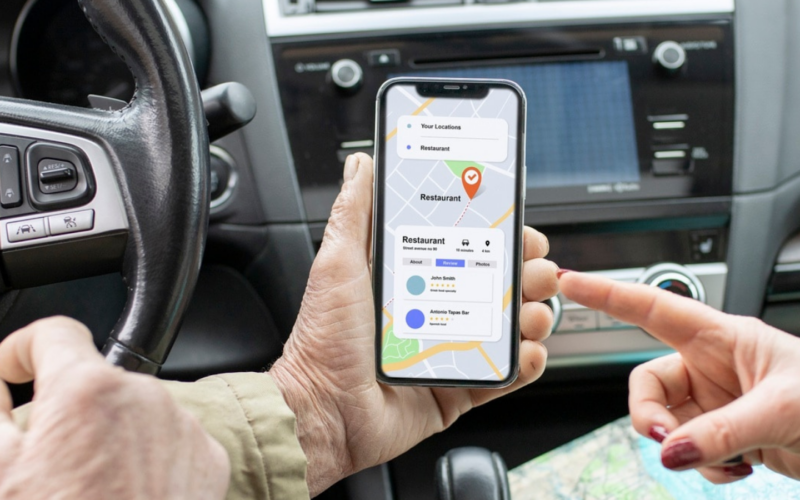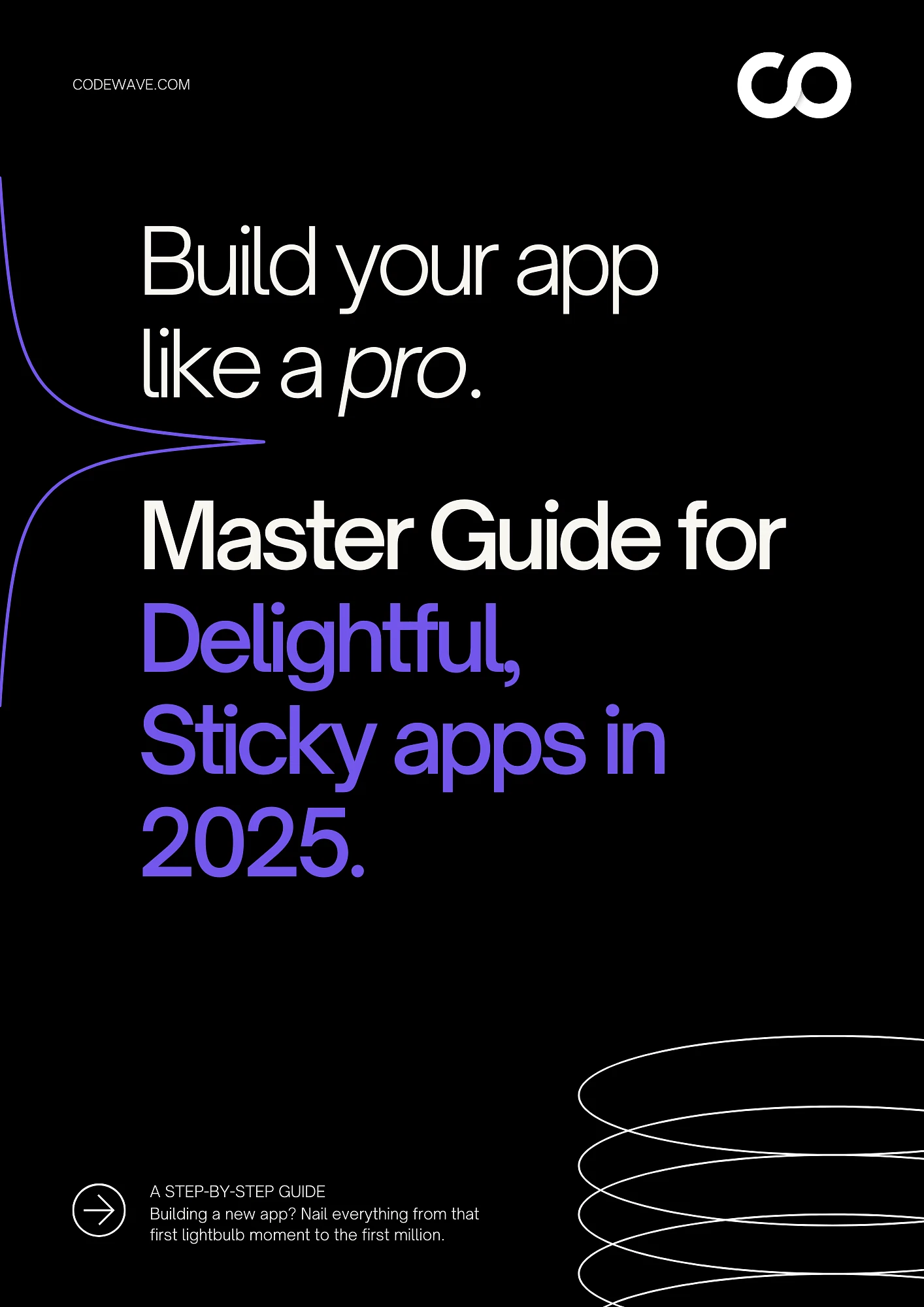Do you feel the pressure to introduce new products to the market quickly, but worry about the risk of them missing the mark? You are not alone. Gartner Research reports that 40% to 80% of new technology products fail, making missteps both costly and discouraging for enterprises aiming to innovate.
While MVPs are often seen as a startup staple, they can be just as powerful for large organizations. By focusing on a minimum viable product, you can prioritize features that truly serve your customers and align with your business goals.
In this guide, we will explore how MVP development for enterprises can provide a clear path from concept to a market-ready solution. You will see how this approach bridges the gap between innovation and measurable business outcomes.
Key Takeaways
- MVPs Are Strategic Assets: For enterprises, MVPs reduce risk, validate market demand, and accelerate delivery of solutions that align with business goals.
- Validation Comes First: Start with problem and user research to ensure you’re solving high-value challenges before investing in full-scale builds.
- Feature Focus Wins: Apply prioritization frameworks like MoSCoW or RICE to build only what delivers the most impact early on.
- Scalability Is Non-Negotiable: Utilize a modular, cloud-native architecture to ensure your MVP can scale without incurring costly rework.
- Success Is Measured in Outcomes: Track KPIs like adoption, reduced service time, or revenue lift to prove ROI and guide future iterations.
What is a Minimum Viable Product (MVP)?
A Minimum Viable Product (MVP) is the earliest version of your product that includes only the essential features needed to address a core user or business problem. It is designed to be functional, usable, and valuable enough for early adopters, while omitting non-critical enhancements and complex systems that can be added later.
The “minimum” in MVP refers to the scope of features, not the quality. An MVP should still meet high standards in terms of usability and reliability, so that it can gather meaningful feedback.
Example: Imagine you are a retail chain planning to roll out a mobile shopping app for your customers. Instead of building the entire suite with loyalty programs, AI-driven recommendations, and social sharing from the outset, your MVP can initially include only core features. These include product search, browsing, shopping cart, and secure checkout.
This lets you test adoption, refine the shopping flow, and confirm customer interest before investing in advanced functionalities.
Also Read: Building an MVP Application: A Step-by-Step Mobile App Guide
Why Do You Need to Develop an MVP?
For enterprises, building a full-scale product without market validation can drain resources and delay returns on investment. An MVP gives you a smarter path forward by proving your idea’s potential before committing to large-scale development.
1. Reduce Financial Risk: An MVP limits upfront investment by focusing only on essential features. If the idea fails to gain traction, you’ll save substantial time and budget that can be redirected to other priorities.
2. Validate Market Demand: It helps you confirm whether there is genuine interest in your product. Early usage data and customer feedback indicate whether your solution effectively addresses a genuine pain point or requires refinement.
3. Accelerate Time to Market: By avoiding unnecessary features at the start, you can launch sooner, gain early users, and adjust based on their needs instead of assumptions.
4. Gather Actionable Insights: User interaction with your MVP provides valuable data on functionality, usability, and desired features, helping you refine your roadmap with confidence.
5. Attract Stakeholder Support: Whether you are seeking investor funding, board approval, or internal buy-in, an MVP acts as tangible proof of your product vision and its potential impact.
Pro Tip: Use the MVP stage to define your product’s success metrics early. This ensures you are measuring real business impact, not just feature completion.
You know what an MVP is and why it matters; now, let’s break down exactly how to create one that works for your enterprise.
MVP Development for Enterprises: A Practical Step-by-Step Guide
For enterprises, MVP development is a disciplined process that strikes a balance between innovation and risk control. It is not about building a “light” version of a product. Precisely, it involves validating an idea in the real world, collecting actionable data, and iterating toward a market-ready solution.
Here is a detailed step-by-step approach tailored for enterprise-scale projects.
1. Identify and Validate the Problem
Even the most established enterprises can waste millions developing products without confirming the market need. The first step is to pinpoint the exact problem you are solving and ensure it’s worth addressing.
How to do it effectively:
- Run stakeholder interviews to gather perspectives from decision-makers and operational teams.
- Conduct a SWOT analysis to uncover market gaps and competitive weaknesses.
- Use surveys, polls, or focus groups to gauge the extent and urgency of the problem.
- Validate the financial or operational impact of solving this problem.
Example: Suppose a multinational insurance provider identifies slow claims processing as a major customer pain point. Through early research, they can confirm the operational cost of delays and the potential retention benefits of improving processing speed.
Why it matters: Clear problem validation aligns your MVP with measurable ROI from the outset.
2. Focus on User Research
For enterprises, market research is often already in place. What’s usually missing is deep user insight, especially for internal platforms or niche B2B products.
Methods to apply:
- User interviews: Capture pain points, habits, and unmet needs directly from target users.
- Usability testing: Small, iterative tests with 3–5 users per round.
- A/B testing: Compare interface design or workflow options to see which performs better.
Pro Tip: Keep research cycles short (1-2 weeks). Long research phases delay validation and slow decision-making.
3. Define Core Features and MVP Scope
Enterprises often suffer from “feature creep,” which is the misconception that adding more features equals more value. In reality, unused or low-impact features waste development time and budget.
Your MVP should do one thing exceptionally well: solve the validated problem. Anything else can be deferred to future iterations.
Steps to prioritize features:
- List all potential features.
- Apply the applicable prioritization frameworks to narrow down the options:
- MoSCoW (Must have, Should have, Could have, Won’t have)
- RICE (Reach, Impact, Confidence, Effort)
- Value vs. Effort Matrix
- Align shortlisted features with business KPIs (e.g., reduced processing time, increased conversion rate).
- Assess technical feasibility within budget and timeline.
Why it matters: Pendo research shows 80% of software features are rarely or never used, costing publicly traded cloud companies up to $29.5 billion in missed value.
Example: A healthcare network launching a patient app can focus its MVP on appointment booking and secure chat, postponing AI symptom checking until after adoption is proven.
4. Design and Prototype
Prototyping bridges the gap between idea and execution. It allows you to visualize the product, refine UX, and align stakeholders before development.
Process:
- Wireframing: Use Figma or Balsamiq to create low-fidelity layouts.
- Mockups: Add visual elements, branding, and interactive flows.
- Prototypes: Create clickable, high-fidelity versions for usability testing.
- Test with target users to identify navigation issues, unclear labels, or slow workflows.
Example: A retail chain can prototype an inventory management dashboard and get it tested with store managers. Feedback may reveal a need for real-time alerts, which can be added before the coding begins.
5. Build the MVP
With design locked and features prioritized, development begins. In an enterprise setting, choosing the right architecture and process is crucial for scalability.
Best practices:
- Document a software requirement specification (SRS) covering both functional (what it does) and non-functional (performance, security, compliance) requirements.
- Choose a scalable tech stack: React for frontend, Node.js for backend, AWS Lambda for serverless operations, and Docker for containerization.
- Use Agile Scrum to break work into sprints, allowing quick adjustments based on evolving needs.
Pro Tip: Involve QA early in development to catch issues before they become expensive fixes.
6. Test for Quality and Performance
You cannot afford a flawed MVP. Testing ensures that your MVP functions effectively under real-world enterprise conditions.
Testing layers:
- Unit testing: Validate individual functions.
- Integration testing: Ensure systems work together (API, database, third-party services).
- User Acceptance Testing (UAT): Confirm alignment with business requirements.
- Load testing: Check scalability under peak demand.
Example: A fintech company can simulate heavy transaction loads to test the stability of a payment app MVP before rolling it out to early adopters.
7. Launch with a Feedback Loop
An enterprise MVP launch is about creating a system that learns, adapts, and improves continuously. A well-structured feedback loop ensures that real user data, rather than assumptions, supports every enhancement.
Key actions:
- Track adoption metrics: Measure feature usage, user engagement, and churn.
- Segment feedback: Break down insights by user type, region, or department for targeted improvements.
- Use advanced analytics: Tools like Google Analytics, Mixpanel, and Amplitude help capture both quantitative and qualitative data.
- Cluster and prioritize feedback: Group recurring queries or issues to identify high-impact changes and evaluate them by complexity and business value.
Example: A transportation company can launch a route optimization MVP and discover through analytics that drivers in urban areas are skipping suggested routes. This can lead to a UX redesign for traffic-heavy cities.
8. Iterate and Improve
Post-launch, the MVP becomes a learning engine. Ensure that improvements are guided by data, not intuition or guesswork. Utilize the Build-Measure-Learn loop to refine features and scale your operations effectively.
Pro Tip: Measure success with KPIs set during planning (e.g., reduction in service time, revenue per user).
Why it matters to enterprises: Iteration ensures you only invest in features proven to drive business value, avoiding resource drain on low-impact enhancements.
With these eight steps, you have a clear roadmap for taking an MVP from concept to launch. To make it even more actionable, here’s a breakdown of the tools and success metrics that can guide you through each stage.
| Step | Recommended Tools | Key Success Metrics |
| Identify & Validate the Problem | Google Forms, Typeform, SurveyMonkey, SWOT templates | % of users confirming the problem exists, Potential cost/time savings identified |
| Research the User | Lookback, UserTesting, Optimal Workshop | Number of actionable insights, reduced assumption-driven decisions |
| Define Core Features | Trello, Jira, Productboard | Feature reduction ratio, Alignment score with business goals |
| Design & Prototype | Figma, Balsamiq, Adobe XD | Task completion rate in usability tests, Time to create first clickable prototype |
| Build the MVP | GitLab CI/CD, AWS Lambda, Docker, Node.js, React | Sprint velocity, Development cycle time |
| Test for Quality & Usability | Selenium, Cypress, Postman, JMeter | Number of bugs found pre-launch, UAT pass rate |
| Launch & Feedback Loop | Google Analytics, Mixpanel, Amplitude | Daily/monthly active users (DAUs/MAUs), Feature adoption rate, Churn rate |
| Iterate & Improve | Jira, Miro, Data Studio | Improvement in NPS/CSAT, % of changes backed by user data |
Also Read: Key Strategies to Build a Market-Ready AI MVP
Of course, even with a solid process in place, developing an MVP at an enterprise scale comes with its own set of hurdles. Knowing them upfront can save you time, money, and frustration.
MVP Development for Enterprises: Key Challenges
Building an MVP in an enterprise environment is a balancing act between speed, value, and future readiness. While the process can drive faster innovation and lower risk, it also presents unique challenges that must be addressed early.
1. Managing Stakeholder Expectations and Brand Alignment
In many enterprises, leaders expect a polished, feature-rich product from the first release (something that reflects the brand’s market position). An MVP, however, is intentionally minimal, designed to test ideas quickly and evolve.
How to overcome the disconnect:
- Communicate the MVP’s purpose early: rapid validation, reduced risk, and cost efficiency.
- Share a future roadmap that shows how the MVP will evolve into a complete product.
- Provide regular updates so stakeholders see progress and results.
- Align the MVP’s design and tone with the brand’s values, even if the functionality is limited.
Pro Tip: Position the MVP as a strategic experiment, not a “lesser product.” This helps secure buy-in without diluting the brand image.
2. Integration with Existing Systems
Most enterprise MVPs require integration with legacy software, internal databases, or third-party platforms. Without careful planning, integration can delay launches and create ongoing maintenance issues.
How to approach integration:
- Audit existing systems to identify compatibility gaps.
- Build and test APIs or connectors for legacy platforms to ensure smooth integration.
- Ensure data flows securely and reliably between systems.
- Test integrations under real-world conditions, not just in development environments.
Example: A healthcare provider can build APIs to connect its appointment booking MVP with an existing EHR system. This will ensure that patient records are updated in real-time without compromising HIPAA compliance.
3. Ensuring Scalability
An MVP might start small, but at the enterprise level, it must be built to handle growth from the outset, whether that involves increased user traffic, larger datasets, or new geographies.
How to plan for scalability:
- Utilize a modular architecture to enable the addition of features without disrupting the system.
- Opt for cloud platforms like AWS, Google Cloud, or Azure for flexible scaling and cost control.
Why it matters: Building scalability later can be costly and time-consuming. Starting with a scalable foundation preserves performance and user experience during growth.
Struggling to design an MVP that can grow without costly rework? Explore our cloud infrastructure development services to establish a scalable foundation that supports future growth without compromising performance.
With an idea of the roadblocks to watch out for, let’s look at how much time you’ll realistically need to get your MVP from concept to launch.
What is the Duration of MVP Development for Enterprises?
While “minimum viable” might sound quick, building an enterprise-ready MVP is a structured process, not a rush job. Here’s a typical timeline breakdown:
- Planning & discovery: 2–4 weeks (stakeholder interviews, requirement gathering, feature prioritization).
- Design & prototyping: 2–4 weeks (wireframes, mockups, usability testing).
- Development & testing: 2–12 months depending on complexity.
Why it matters: Rushing through planning and testing can lead to costly post-launch fixes. A well-structured MVP lifecycle accelerates market entry while minimizing the need for rework.
Example: A retail brand developing a basic e-commerce MVP may be able to launch in under four months, whereas a supply chain optimization MVP for the same brand may require 8–10 months due to the complexity of integrations and analytics.
Of course, time is only half the equation. The other big question on every enterprise leader’s mind is what it will cost to build the MVP.
How Much Does MVP Development for Enterprises Cost?
Costs can vary significantly depending on the project’s scope, complexity, and technical requirements. Key cost drivers include:
- Target platforms (web, mobile, cross-platform)
- Design complexity and UX requirements
- Feature set and integrations
- Tech stack plan selection
- Team size and expertise level
Average cost ranges:
- Simple MVP: $60,000 – $90,000
- Medium complexity MVP: $120,000 – $250,000
- Complex MVP: $250,000+
Pro Tip: Choosing the cheapest development option can backfire. Poorly built MVPs often require complete redevelopment, wiping out any initial savings. Hence, partner with a development team that has experience in enterprise-scale projects. Higher upfront investment usually means fewer post-launch issues and faster time-to-value.
Have an idea but unsure how to turn it into a market-ready product? Our idea-to-product development services take you from concept validation to launch, ensuring your MVP meets business goals and resonates with users from the start.
How Codewave Excels in MVP Development for Enterprises
You might start your MVP journey with a strong product vision, only to face familiar enterprise roadblocks. These may include stakeholder misalignment, scope creep, integration complexities, or scalability concerns.
The issue is rarely the lack of ideas; it’s the absence of a proven, outcome-focused approach to turning those ideas into validated, minimum viable products that can attract feedback.
At Codewave, MVP development is a core part of our custom software development services. We create enterprise-grade MVPs that are strategically aligned, user-focused, and built to scale.
Here’s how our MVP development services help enterprises:
- Validate Before You Build: We co-create rapid prototypes and pilot versions with real users and stakeholders, ensuring product-market fit before development ramps up.
- Prioritize High-Value Features: We utilize frameworks like MoSCoW and RICE to narrow down to the 20% of features that will drive 80% of your business impact, thereby avoiding feature bloat.
- Ensure Enterprise-Grade Scalability: We apply a modular, cloud-native architecture on platforms such as AWS, Azure, or GCP. Everything is built to grow, whether you need auto-scaling, regional expansion, or microservices deployment.
- Integrate Smoothly with Existing Platforms: We audit your systems and create secure API-led integrations with your ERPs, CRMs, or legacy platforms. This preserves operational continuity and data integrity.
- Accelerate Time-to-Market: We deliver solutions up to 3x faster using Code Accelerate, our library of pre-built, battle-tested modules for authentication, payment processing, notifications, analytics, and more.
The best way to see what we can do is to explore our portfolio. Check how we’ve helped enterprises in healthcare, fintech, retail, and logistics turn ideas into successful MVPs first, and then into ready-to-launch products.
Your MVP is too important to leave to guesswork. Validate your idea, build for scale, and launch faster with proven MVP development for enterprises. Talk to us today to get started!
FAQs
1. What is the difference between MVP and PoC, and which comes first?
A Proof of Concept (PoC) validates whether the core technology or approach will work in practice. On the other hand, a Minimum Viable Product (MVP) is a usable, market-ready version with essential features for user feedback. In most projects, the PoC is built first, then the MVP.
2. What are the different types of MVP?
MVPs fall into two main types: Low-Fidelity and High-Fidelity. Low-fidelity MVPs are quick and low-cost concepts, such as sketches, paper prototypes, or basic wireframes. High-fidelity MVPs are functional, interactive products with core features, built for real user testing and market validation.
3. What is the difference between an MVP and a prototype?
A prototype is a preliminary model used to visualize and test design or functionality, typically without all the full working features. An MVP is a functional product with essential features, built for real users to validate market demand and gather actionable feedback.
4. What are the key sourcing models for MVP development?
You can choose in-house (complete control, but slower access to skills), partial outsourcing (faster start, but coordination is on you), or complete outsourcing (vendor-managed, quick start, proven processes). The main risk is selecting an inexperienced vendor, which can impact quality and timelines.
5. What are the common MVP launch strategies?
Enterprises can choose a Soft Launch (e.g., a fintech firm releasing its payment MVP to select corporate clients for feedback), a Hard Launch (a retail chain launching a new e-commerce MVP nationwide), or a Dark Launch (a SaaS enterprise gradually enabling new analytics features for enterprise accounts).
Codewave is a UX first design thinking & digital transformation services company, designing & engineering innovative mobile apps, cloud, & edge solutions.







